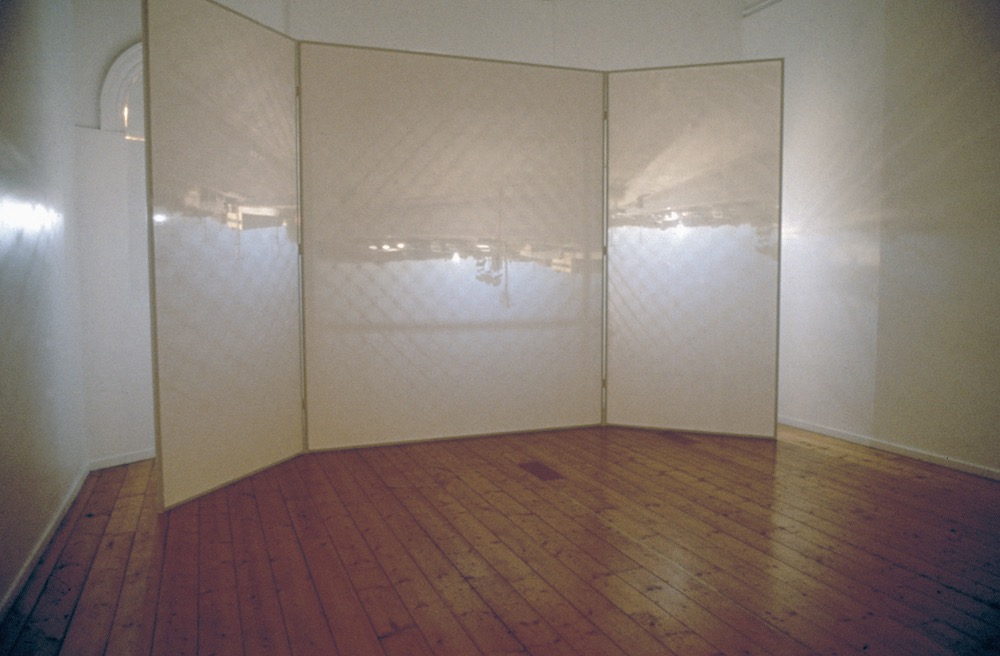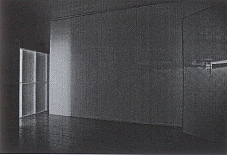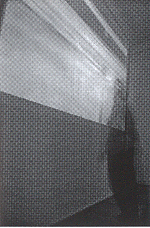A General Review of Gain and Loss
A collaborative installation with Daniel von Sturmer and Andy Thomson Westspace, Footscray, 1997











In choosing to produce a single work, these artists are attempting to open their individual practices by way of a working process responsive to the possibilities of exchange, improvisation and cooperation. In the construction of this installation, the spaces between works that may have served to differentiate one practice from another are revealed as a shared consideration of the peripheral, incidental and contingent aspects of reality and its representation.
All three artists are disinclined to work within the silent immobility of modernism's picture plane; the space of painting. This pictorial space is a purely representational space, obedient only to the terms and conditions of vision itself. To stand and behold a painting is to engage with a representation that is perpetually in the present moment. All front and no back, painting's plane provides a bounded, flat and reliable ground on which an image can hold still. Instead these artists choose to perforate, make permeable and mutable a pictorial space by rending it open to the passage of time, of bodies, and a particular kind of attention. Unlike the space of painting, their not-so-pictorial space is inclusive of a duration. It sustains a before, and after and a successiveness that cannot be experienced in the blink of an eye. With no single point from which the entire work can be apprehended, the work is revealed through apertures and interstices that punctuate the blind foil of the works material configuration.
In traversing its spaces, anticipation and expectation of a particular space or situation can contrive to confound and illuminate the experience of the work. By reconfiguring the topographical coordinates of the space, the work attempts to bring to light the necessity for an orientation not solely contingent upon the visual. Illusion and disillusion may occasion a recourse to navigation not by sight, but by sense.
The work encourages a particular kind of attention. A kind of double vision; a seeing and a knowing one is seeing. It provokes a consciousness of self and of attending that sees through to the structures and conditions that frame, focus and give orientation to the experience of looking. It is an attention that engages both mind and body in the negotiation of a work that is not-at-all straightforward.
This both at once- of being caught inside the space of representation and looking on from without- may counter any attempts to delineate the work by its material periphery alone. In this work, outside and inside take on a deductive relation to one another. All at once, here and there, exterior and interior are simultaneously affirmed and confused, situating the viewer in a transitional space that is seemingly no-place in particular.
Though not specific to this particular site, the work has been conceived and produced in response to those conditions that sustain the site as a building reconfigured to accommodate the display and reception of art. While contingent upon the terms and conditions of vision itself, the work has set its sights from that which is already in existence, rendering the person who arrives, who walks in, through and around and out again, as the site and subject of the work.
Tanya Eccleston